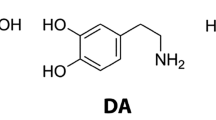Abstract
Nitrosodiethanolamine is found in synthetic cutting oils and in many cosmetic preparations and is probably the N-nitroso compound to which human exposure is greatest1–3. It is formed by reaction of the commonly used amines diethanolamine and triethanolamine4 with nitrosating agents. An assessment of the possible risk in human exposure to nitrosodiethanolamine must be based on sound chronic toxicity data. A previously published chronic test of this compound in rats has shown it to induce liver tumours after very high oral doses5, and tumours of the nasal cavity after administration of high repeated doses to Syrian hamsters by subcutaneous injection6. To improve our understanding of the carcinogenic potency of nitrosodiethanolamine, we undertook a more extensive study, in which the compound was administered at concentrations ranging from 3,900 to 31,250 parts per million (p.p.m.) in drinking water, to groups of rats for about 6 months. We report here that when the animals were killed, all bore hepatocellular carcinomas, many of which metastasized at the higher doses, indicating that nitrosodiethanolamine is a carcinogen of considerable potency in the rat. However, it is inactive or very weakly active in short-term tests, such as the Salmonella mutagenesis test developed by Ames7.
This is a preview of subscription content, access via your institution
Access options
Subscribe to this journal
Receive 51 print issues and online access
$199.00 per year
only $3.90 per issue
Buy this article
- Purchase on Springer Link
- Instant access to full article PDF
Prices may be subject to local taxes which are calculated during checkout
Similar content being viewed by others
References
Fan, T. Y. et al. Science 196, 70 (1977).
Zingmark, P. A. & Rappe, C. Ambio 6, 237 (1977).
Fan, T. Y. et al. Fd Cosmet. Toxicol. 15, 423 (1977).
Lijinsky, W., Keefer, L., Conrad, E. & Van de Bogart, R. J. natn. Cancer Inst. 49, 1239 (1972).
Druckrey, H., Preussmann, R., Ivankovic, S. & Schmähl, D. Z. Krebsforsch. 69, 103 (1967).
Hilfrich, J., Schmeltz, I. & Hoffmann, D. Cancer Lett. 4, 55 (1978).
Rao, T. K., Young, J. A., Lijinsky, W. & Epler, J. L. Mutat. Res. 66, 1 (1979).
Lijinsky, W., Losikoff, A. M. & Sansone, E. B. J. natn. Cancer Inst. (in the press).
Author information
Authors and Affiliations
Rights and permissions
About this article
Cite this article
Lijinsky, W., Reuber, M. & Manning, W. Potent carcinogenicity of nitrosodiethanolamine in rats. Nature 288, 589–590 (1980). https://doi.org/10.1038/288589a0
Received:
Accepted:
Issue Date:
DOI: https://doi.org/10.1038/288589a0
This article is cited by
-
Direct determination of N-nitrosodiethanolamine in triethanolamine with HPLC, ion-exchange chromatography and UV-detection
Fresenius' Journal of Analytical Chemistry (1990)
-
Increased mutagenicity of N-nitrosodiethanolamine in human lymphocyte cultures after activation by alcohol dehydrogenase
Journal of Cancer Research and Clinical Oncology (1989)
-
Cytogenetic effects of N-nitrosodiethanolamine (NDELA) and NDELA-monoacetate in human lymphocytes
Journal of Cancer Research and Clinical Oncology (1988)
-
Structure-activity relations in carcinogenesis by N-nitroso compounds
Cancer and Metastasis Review (1987)
-
The effect of mixed-function oxidase and amine oxidase inhibitors on the activation of dialkylnitrosamines and 1,2-dimethylhydrazine to bacterial mutagens in mice
Journal of Cancer Research and Clinical Oncology (1986)
Comments
By submitting a comment you agree to abide by our Terms and Community Guidelines. If you find something abusive or that does not comply with our terms or guidelines please flag it as inappropriate.



